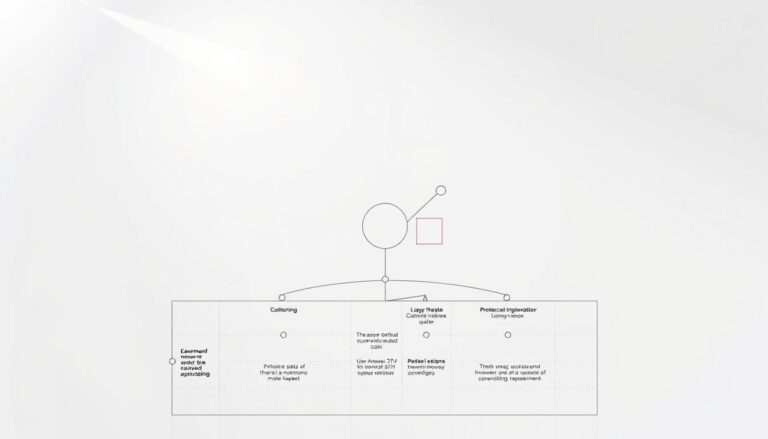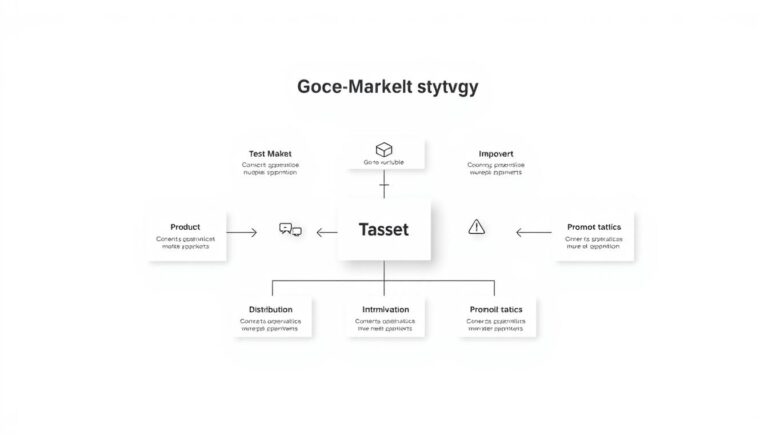In today’s world of SEO, meta tags and descriptions are vital. They’re like your site’s first handshake with users and search engines. Crafting them well can boost your site’s visibility and draw more visitors.
To optimize meta tags and descriptions, you need a mix of engaging content and technical know-how. Search engines use complex algorithms to read your site. Following meta description best practices can increase your click-through rates and help your site rank better.
Key Takeaways
- Meta tags serve as SEO cornerstones, influencing both search engine rankings and user experience.
- Title tags should be concise, yet descriptive and fall within a 60-65 character limit.
- Meta descriptions must encapsulate the essence of the content within 155-160 characters.
- SEO strategies for meta tags are in constant evolution; staying informed is key.
- Proper use of robots, noindex, and nofollow tags guide search engines effectively.
- Enhancing user experience with viewport and image alt attributes is essential for modern SEO.
Understanding the Importance of Meta Tags and Descriptions
Meta tags and descriptions are key to good SEO. They help search engines understand and rank websites better. By working on these elements, site owners can boost engagement and rankings.
What Are Meta Tags?
Meta tags are pieces of HTML code that tell search engines about a webpage. Though unseen by visitors, they play a big role in indexing and showcasing pages in search results. Important tags include the title tag and meta description, giving a peek into the page’s content.
The Role of Descriptions in SEO
A meta description is like an ad for your webpage. A strong meta description can increase clicks from search results. This not only brings more visitors but also boosts a page’s SEO and ranking.
Why They Matter for User Experience
Well-crafted meta tags and descriptions improve how users perceive a webpage before visiting it. They ensure users know what to expect, enhancing satisfaction and retention. This alignment with user search intent is critical.
| Meta Tag Type | Role in SEO | Impact on User Experience |
|---|---|---|
| Title Tags | Directly influences SERPs and CTR | First impression of the webpage |
| Meta Descriptions | Improves CTR and engagement | Provides context on what to expect on the webpage |
| Viewport Tags | Ensures proper mobile display | Enhances mobile user experience |
| Robots Tags | Controls search engine indexing | Ensures content is shown to the right audience |
Mastering these HTML elements can make a site more visible and user-friendly. It highlights the need for strategic SEO in digital marketing today.
Key Components of Effective Meta Tags
Effective meta tags are crucial for SEO success. They tell search engines about your web pages. This helps decide where your pages rank in search results. Title tags and robots meta tags are especially important for visibility and attracting users.
Title Tags and Their Influence
Title tags are like a front door sign for your website. They are the clickable headlines in search results. The trick is to make them short yet interesting. By placing keywords early in the title, you make sure people see them. This not only improves title tag optimization but also meta tag effectiveness. Avoid stuffing too many keywords in them.
Using Meta Robots Tags Correctly
Robots meta tag guidance shows it’s key for managing search engine actions. These tags give instructions to web crawlers. For example, a ‘noindex, follow’ directive means not to index a page but to follow its links. This helps manage what content gets seen and links even unindexed pages to the rest of the web.
For more details, visit unlocking robotic process automation benefits. It shows how meta tags help both in SEO and automation technologies.
Table Summary: Insights Into Meta Tag Power and Practices
| Feature | Recommendation | Impact |
|---|---|---|
| Title Tag Length | 50-60 characters | Prevents truncation, improves clarity |
| Meta Robots Use | Apply ‘noindex, follow’ selectively | Controls crawler actions, enhances link follow-through |
| Keyword Integration | Early placement in title tags | Increases relevance and search ranking |
Boosting your website’s meta tag effectiveness through smart title tag optimization and robots meta tag guidance can change how your site ranks and is seen online.
Crafting Compelling Meta Descriptions
Getting your site noticed in search results is crucial. Meta description optimization helps with that. It’s about balancing SEO needs with engaging content. This makes your pages stand out to potential visitors.
Character Limits to Consider
Character limits are key for meta descriptions. They decide if your text gets cut off in search results. Aim for 155-160 characters. This ensures users see your full message. It helps grab their interest and boosts click-through rates.
The Art of Persuasion in Descriptions
Optimizing meta descriptions is more than counting characters. It’s about using words to persuade people to visit your site. Use strong action verbs and highlight benefits. Show them the value they’ll get right away. This increases user engagement.
Incorporating Keywords Naturally
Adding relevant keywords is also important. It’s good for SEO and matches what users are looking for. Weave in your keyphrase smoothly. Make sure it fits well and shows what your page is about. Google likes this and will highlight these keywords in search results.
Let’s look at some ways to make meta descriptions better and the results they bring:
| Aspect | Recommendation | Impact |
|---|---|---|
| Character Limit | 155-160 characters | Prevents truncation in SERPs |
| Keywords Incorporation | Include focus keyphrase naturally | May enhance visibility for targeted searches |
| Content Type | Persuasive and concise | Improves click-through rate |
| Originality | Unique to each page | Decreases the likelihood of duplicated content penalties |
Mastering meta descriptions is essential, not just for SEO. It’s a big part of marketing your site. Good meta descriptions invite readers in. They are the link that makes someone go from just seeing your site in search results to actually visiting it.
Best Practices for SEO Optimization
To boost your website’s visibility, follow SEO optimization best practices. This means doing several things well, like keyword research for meta tags and competitor analysis. By mastering these areas, your meta tags will attract both search engines and your audience.

Conducting Keyword Research
Keyword research is key to creating effective meta tags. Focus on what your audience searches for. Using these keywords in your meta tags makes them more relevant. This boosts SEO performance.
Analyzing Competitor Meta Tags
A thorough competitor analysis shows you the effective meta tags used by competitors. Learning from them can reveal market trends. This helps make your tags stand out in search results.
This comparative analysis shows different meta tags important for SEO:
| Meta Tag Type | Importance for SEO | Common Practices | Effect on SERP Ranking |
|---|---|---|---|
| Title Tag | Critical | Includes main keywords | Directly impacts search visibility |
| Description Tag | High | Concise summary of webpage | Influences user click-through rates |
| Keyword Tag | Medium | Relevant keywords list | Used less due to potential for keyword stuffing |
| Hreflang Tag | Useful for multilingual sites | Indicates language and regional targeting | Improves targeting accuracy |
| Canonical Tag | Essential for content-rich sites | Prevents duplicate content issues | Preserves search rankings |
By using these SEO optimization best practices, like proper keyword research for meta tags and competitor analysis, you will improve your strategy. This complete approach is crucial for success online and getting top search engine spots.
Tools and Software for Optimization
Optimizing meta tags and descriptions is key to improving SEO. There are many meta tag optimization tools and SEO software out there. They have different features for various SEO needs. It’s important to know which tools fit your SEO strategy. This helps in picking the best software for your website.
Top SEO Tools Available
There’s a big selection of SEO tools, from plugins for websites to full SEO platforms. For example, Yoast SEO helps users see how their meta descriptions will look. You can do this directly from your website’s dashboard. Then, there’s SEMrush. It’s great for analyzing meta elements and checking out competitor keywords. This is very helpful for detailed SEO planning.
Metrics for SEO strategy help tell if your tools are working well. Ahrefs gives in-depth reviews of your meta tags, content, and more. It helps businesses improve their SEO for better rankings.
How Metrics Can Guide Your Strategy
Tracking the right metrics for SEO strategy is vital. Google Tag Manager lets you manage meta tags easily without changing website code. MozBar shows you on-page data while you browse. This info helps in making smart SEO choices and seeing if your meta tag changes work.
Looking for new SEO tools? Check out reviews and user experiences first. Pick SEO software that fits with your digital setup and is easy to use. Make sure it has the right meta tag optimization tools for your needs.
Using advanced SEO tools and tracking important metrics for SEO strategy can boost your online presence. The aim is to help your site rank higher in search results. Make sure the tools you choose truly help you stay on top of rankings.
Common Mistakes to Avoid
When optimizing meta tags for search engines, several common pitfalls can lower your SEO effectiveness. Knowing and avoiding these mistakes boosts your site’s visibility and engages users more.
Overstuffing Keywords
Avoiding keyword stuffing is crucial for meta tags. Using too many keywords hurts readability and may lead to search engine penalties. It’s vital to use keywords naturally, making content engaging and relevant.
Ignoring Mobile Optimization
Do not overlook mobile optimization for meta tags. Since Google rewrites meta descriptions for mobile 70% of the time, it’s crucial. Make sure meta descriptions work well on smaller screens for better SEO and engagement.

Following these tips helps avoid SEO mistakes, making your online presence stronger. Proper keyword use and mobile optimization are key to reaching your digital marketing goals.
Staying Updated with SEO Trends
In the fast-paced world of search engine optimization, staying current is a must. The changes in algorithms are big deals. They shape how we make SEO strategies. To not fall behind in search results, knowing the latest trends is key. This means updating how we use meta tags often.
The Impact of Algorithm Changes
Algorithm changes mean more than keeping your rank. They are opportunities to boost your online presence. Look at AIContentfy’s success, for example. They reached 100k visitors monthly in less than a year. A smart meta tag strategy is essential. Include well-chosen title tags of 50-60 characters and meta descriptions of 150-160 characters. Relevant keywords and engaging content summaries help increase clicks and user interest.
Future-Proofing Your Meta Strategies
To keep your meta tag game strong, research keywords regularly. Check how your website is doing often. Look at rankings, clicks, and how engaged users are. Learn from the pros on Moz, Search Engine Journal, and Backlinko. Join forums, social media talks, and conferences to swap tips and discover new approaches. Sign up for newsletters from trusted SEO and marketing sources. This way, you’ll stay ahead in the ever-changing SEO landscape.
FAQ
What Are Meta Tags?
Meta tags are part of HTML that give info about a web page to search engines and visitors. They are placed in the head section of an HTML document and are crucial for SEO. They help search engines know what the page is about and also affect how users interact with search results.
What is the Role of Descriptions in SEO?
Descriptions, also called meta descriptions, are short summaries of a web page that show in search results. They are key for SEO because they give a quick look at what’s on the page. This can make more users click through by offering a brief but attractive overview of the content.
Why Do Meta Tags and Descriptions Matter for User Experience?
Meta tags and descriptions boost user experience by giving clear, relevant info about a web page’s content. A good meta description can create the right expectations. This leads to a more enjoyable visit to the site.
How Do Title Tags Influence a Web Page’s SEO?
Title tags are crucial for SEO since search engines like Google use them to figure out what a web page is about. They show up as the clickable headline in search results. So, they affect both the search rankings and how users engage with the page.
What is the Correct Way to Use Meta Robots Tags?
Meta robots tags talk to search engines about whether to crawl and index a page. Using them right means telling search engines if they should index a page and follow its links. This is important for managing how search engines see website content.
What Are the Character Limits for Meta Descriptions?
Search engines usually cut off meta descriptions after 155-160 characters. So keeping your descriptions short ensures your full message shows in search results. This helps grab users’ attention better.
How Can Keywords Be Incorporated Naturally in Meta Descriptions?
For keywords in meta descriptions, make sure they fit the page content and are part of easy-to-read sentences. Avoid cramming too many keywords. It can hurt your search engine ranking and turn off users.
What is the Importance of Conducting Keyword Research for Meta Tags?
Keyword research helps find the terms your target audience is searching for. Knowing these can help you make meta tags that match what users want. This can boost your chances of ranking higher in search results.
How Can Analyzing Competitor Meta Tags Inform Your SEO Strategy?
Looking at competitors’ meta tags lets you see the keywords they target and how they phrase their descriptions. This can guide your own strategy. It shows ways to make your content stand out.
What Are Some of the Top SEO Tools Available for Optimizing Meta Tags and Descriptions?
Tools like SEMrush, Ahrefs, Moz, and Google Search Console can help with optimizing meta tags. They offer keyword research, tag analysis, and improvement tips.
How Can Metrics Guide Your Meta Tag Strategy?
Metrics like click-through rates and bounce rates give feedback on your meta tags. By looking at these numbers, you can see which tags work and which need tweaking for better results.
Why Should Overstuffing Keywords be Avoided?
Cramming too many keywords in meta tags can lead to search engine penalties. It’s seen as trying to game the system. It also makes your descriptions less attractive to potential visitors.
How Important is Mobile Optimization for Meta Tags?
With more people using mobile devices for internet access, making sure meta tags and descriptions work well on mobile is key. This helps keep your site visible and easy to use, no matter the device.
How Do Algorithm Changes Impact Meta Tag Optimization?
Changes in search algorithms can change how meta tags are seen by search engines. Staying updated with these changes lets you adjust your SEO strategies to stay in line with new rules and best practices.
Why is it Essential to Future-Proof Your Meta Tag Strategies?
Making your meta tag strategies future-proof means they can adapt to changes in search algorithms and user habits. By focusing on value and relevance, your meta tags are more likely to remain effective over time.



